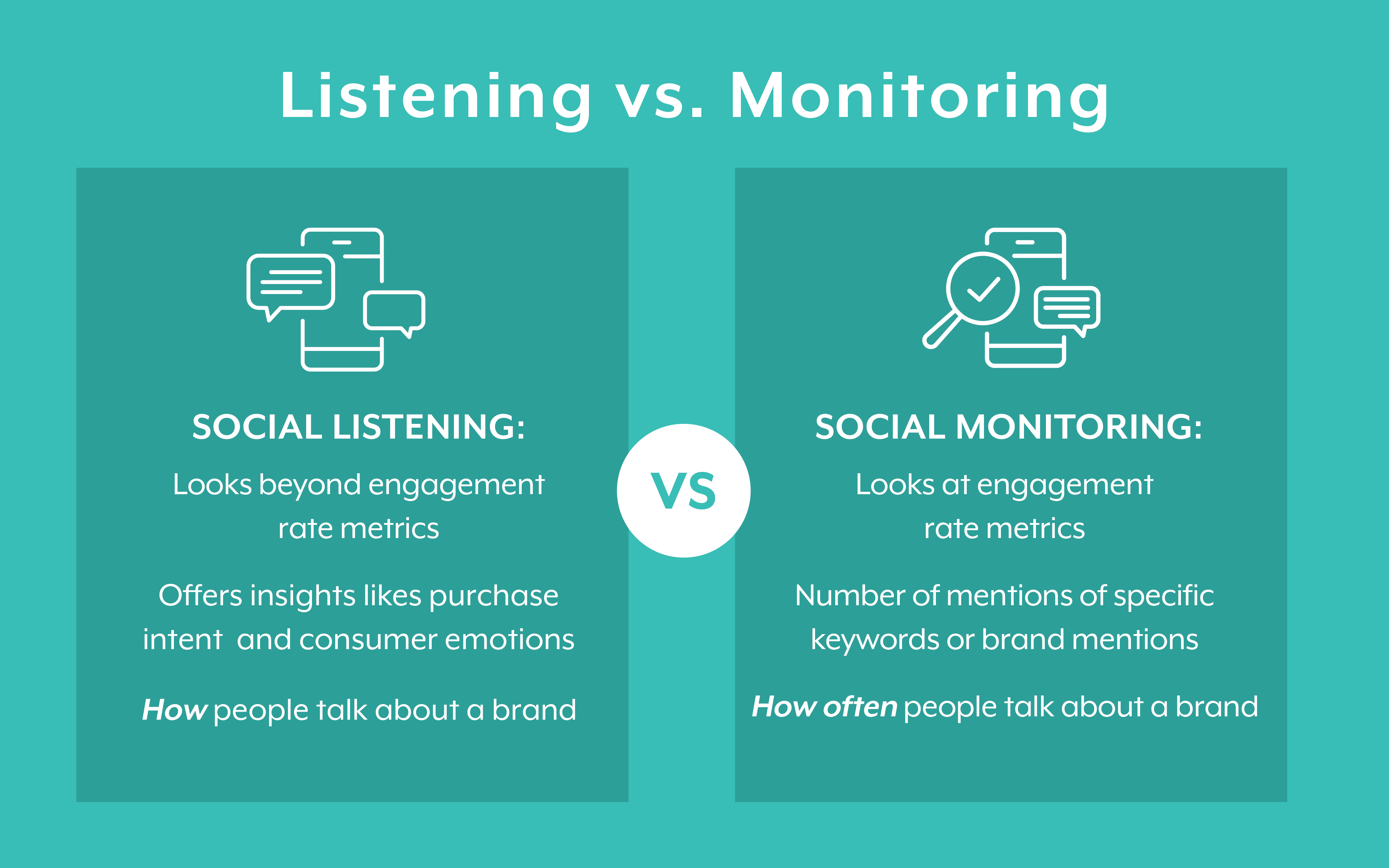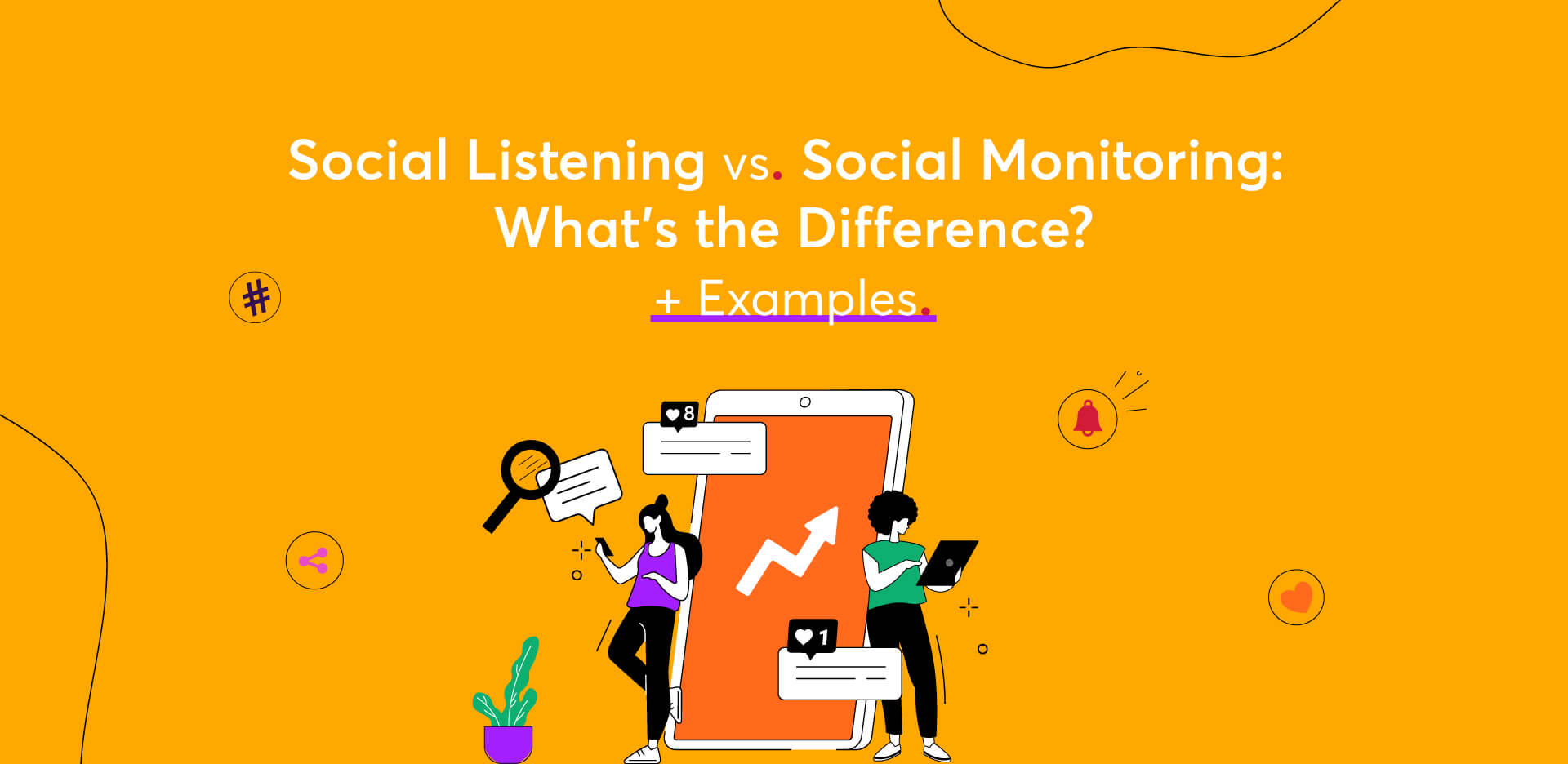In today’s digital age, social media has become an integral part of our lives. It has revolutionized the way individuals and businesses communicate and engage with each other. For businesses, social media presents an excellent opportunity to connect with their audience, build brand awareness, and drive sales. However, merely having a presence on social media is not enough; it’s essential to monitor and listen to what is being said about your brand. In this article, we’ll explore the differences between social media monitoring vs. listening, and their significance in shaping your online presence.
Mastering the Art of Social Media Monitoring Vs. Listening: A Comprehensive Guide

What is Social Media Monitoring?
Social media monitoring involves tracking online conversations, mentions, and discussions related to your brand, products, or services. It focuses on monitoring various social media channels, such as Facebook, Twitter, Instagram, LinkedIn, and more. The primary goal is to gather data and insights about what people are saying about your brand and how they perceive it.
The Role of Social Media Listening
On the other hand, social media listening goes beyond tracking mentions and delves into understanding the underlying emotions and sentiments behind those conversations. It involves analyzing the tone and context of the messages to gain a deeper understanding of customer preferences and pain points.
Understanding the Objectives
Social media monitoring aims to keep a pulse on your brand’s online presence, identify emerging trends, and respond to customer queries promptly. It helps brands maintain an active online presence and address customer concerns effectively.
Conversely, social media listening focuses on understanding customer feedback, preferences, and pain points. It helps brands create customer-centric strategies, improve products or services, and build stronger relationships with their audience.
Social Media Monitoring Vs. Listening Tools
1. Social Media Monitoring Tools
Various social media monitoring tools are available, such as Hootsuite, Sprout Social, and Mention. These tools allow businesses to track brand mentions, keywords, and hashtags across social media platforms.
2. Social Media Listening Tools
Social media listening tools like Brandwatch, Talkwalker, and Sysomos go beyond monitoring and provide sentiment analysis and deeper insights into customer emotions and opinions.
Real-time Insights vs. In-depth Analysis
Social media monitoring offers real-time data and quick insights. It helps businesses respond promptly to customer inquiries and identify potential crises as they unfold.
Conversely, social media listening offers more in-depth analysis, enabling brands to uncover long-term trends, customer behavior patterns, and industry insights.
Proactive vs. Reactive Approach
Monitoring leans toward a proactive approach, where brands actively engage with customers, respond to comments, and manage their online reputation.
Listening adopts a more reactive approach, where the focus is on understanding the audience’s needs and adjusting strategies accordingly.
Sentiment Analysis: Uncovering Emotions
Monitoring tools provide data on the number of mentions and engagements, but they may not reveal the sentiments behind those interactions.
Listening tools use sentiment analysis to gauge whether the mentions are positive, negative, or neutral, providing a better understanding of customer perceptions.
Leveraging Customer Feedback
Social media monitoring helps brands address customer feedback and inquiries, demonstrating excellent customer service.
Social media listening takes it a step further by using feedback to improve products, services, and overall customer experience.
The Impact on Brand Reputation
Monitoring helps maintain a positive brand image by promptly addressing customer concerns and managing potential crises.
Listening helps shape brand reputation in the long run by identifying areas of improvement and aligning business strategies with customer expectations.
Customer Relationship Management (CRM)
Monitoring is closely linked with customer relationship management, allowing brands to handle customer inquiries and issues effectively.
Listening enables personalized and customer-focused strategies, fostering stronger and more meaningful relationships with the audience.
Identifying Trends and Opportunities
Monitoring uncovers real-time trends and viral content, allowing brands to capitalize on current opportunities.
Listening identifies emerging trends and changing customer preferences, helping businesses stay ahead in the market.
Crisis Management and Damage Control
Monitoring helps identify and address potential crises promptly, minimizing damage to the brand’s reputation.
Listening assists in understanding the impact of crises on customer perceptions, facilitating effective damage control strategies.
Integrating Monitoring and Listening Efforts
The most effective approach involves a seamless integration of monitoring and listening efforts, creating a comprehensive social media intelligence strategy.
Measuring Success and ROI
Monitoring success can be measured through metrics like engagement rates, response times, and sentiment analysis.
Listening success is determined by factors such as improved customer satisfaction, increased brand loyalty, and higher conversion rates.
Conclusion
In conclusion, social media monitoring vs. listening are both critical components of a successful social media strategy. While monitoring focuses on real-time data and immediate engagement, listening delves deeper into customer emotions and long-term preferences. To thrive in the digital landscape, businesses must embrace both aspects to build a strong brand reputation, foster lasting customer relationships, and stay ahead of the competition.
Are you ready to take your social media strategy to the next level? Request a demo from AIM Technologies today and discover how our advanced monitoring and listening tools can elevate your brand’s online presence.
FAQs
Is social media monitoring enough to manage my brand’s online presence?
- Social media monitoring is essential for proactive engagement, but combining it with social media listening provides a more comprehensive approach to brand management.
Can social media listening replace customer surveys and feedback forms?
- While social media listening offers valuable insights, it should complement, not replace, other forms of customer feedback collection.
How can I convince my company to invest in social media monitoring and listening tools?
- Showcase the potential benefits, such as improved customer service, better brand reputation, and data-driven decision-making.
Which social media platforms should I focus on when monitoring and listening?
- It depends on your target audience and industry. Identify the platforms where your audience is most active and concentrate your efforts there.
Is social media listening only suitable for large corporations?
- No, social media listening benefits businesses of all sizes by helping them understand their audience better and make informed decisions.




